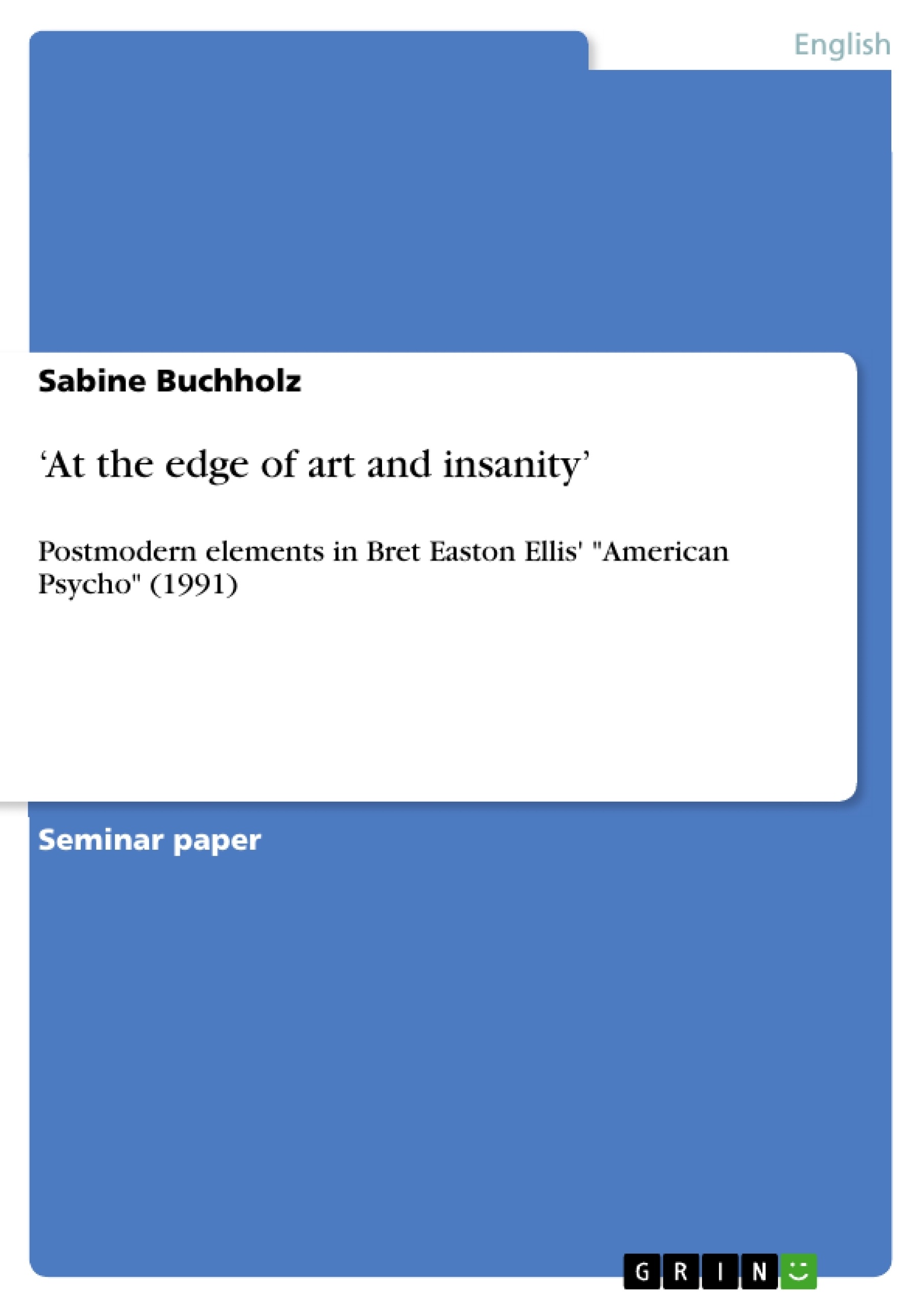With the attention-grabbing novel "American Psycho" Bret Easton Ellis entered quite a dangerous ground. The bizarre mixture of yuppie satire and splatter horror caused reactions of scathing criticism, indignation, yes, even murder threat. As a consequence, the publishing house that had the first contract with Ellis and was supposed to edit the novel, namely Simon & Schuster, responded to this radical refusal and cancelled the deal already made. This decision, not to publish a book due to the negative responds against it, meant another scandal since it was a sensation in the American publishing business. Anyway, brushing aside all moral standards, Ellis’ shocker was published in 1991 by Vintage books, and for a while, the young writer became the “meistgehaßte[…] Autor der Welt” – evidently, because critics considered his narration too pornographic, sexist, anti-women, disgusting, boring and beyond belief. Yet, American Psycho was regarded with interest – probably last but not least because Bret Easton Ellis had been celebrated as a great talent when publishing "Less than Zero".
Meanwhile, countless studies with many diverging approaches manifest that American Psycho may not be condemned and dismissed as a pure splatter work glorifying violence. There are works analysing the publication and the reception of the novel as well as the socio-cultural background; other studies focus on content and stylistic device , or on the motif of the serial killer as postmodern anti-hero. Additionally, some special analyses examine the position of the novel within the American history of censorship or even attempt to draw a parallel from Ellis’ Bateman to Goethe’s Faust.
Thus, it is substantiated that the interest in "American Psycho" has spread widely and quickly. And still, 15 years after its publication the ambiguous novel, which was, besides, brought to screen in 2000, offers many subjects of discussion.
The aim of this paper is to analyse in what way and to what extent Ellis’ work is distinctive for the period of literary postmodernism. Definitively, there are several innovative and scandalous stratagies applied in "American Psycho", but are these devices really symptomatic for a postmodern perception? To answer a question like that, first of all, an essential condition is of course a definition of postmodern terms. [...]
Inhaltsverzeichnis (Table of Contents)
- I. Introduction and objective
- II. Postmodernism and postmodern literature
- III. Postmodern features in American Psycho
- III.a Intertextuality
- III.b Structure and style: Break-ups?
- III.c Shocking the audience
- III.d Breaking restrictions
- III.e Opening up new spaces
- III.f Meta-fiction
- III.g A limited segment of the world
- III.h Liquefaction of the subject
- III.i Crticism against reality
- VI. Conclusion
Zielsetzung und Themenschwerpunkte (Objectives and Key Themes)
The paper aims to analyze the extent to which Bret Easton Ellis’ novel American Psycho is distinctive for the period of literary postmodernism. It seeks to explore whether the innovative and controversial strategies employed in the novel are symptomatic of a postmodern perception of the world.
- Postmodern features in literature
- The use of intertextuality in American Psycho
- The role of shocking content in postmodern literature
- Postmodern concepts of subjectivity and fragmentation
- The relationship between literature and reality in a postmodern context
Zusammenfassung der Kapitel (Chapter Summaries)
The introduction presents the novel American Psycho and its controversial reception, highlighting its blend of yuppie satire and splatter horror. The paper outlines the diverse perspectives on the novel, from analyses of its publication and reception to studies on its stylistic devices and its portrayal of the serial killer as a postmodern anti-hero.
Chapter II provides a definition of postmodernism and its key features, emphasizing the pluralistic view of the world, the elimination of binding structures and rules, and the deconstruction of traditional concepts of the self. The chapter explores the idea of fragmentation and meaninglessness as new chances, highlighting the postmodern embrace of freedom and the limitless nature of text.
Chapter III delves into specific postmodern features found in American Psycho, examining intertextuality, structural and stylistic elements, and the novel’s shocking content. The chapter analyzes the novel’s relationship with reality, the concept of the “liquefaction of the subject,” and its critical stance towards the world.
Schlüsselwörter (Keywords)
The key terms and concepts in the paper include postmodernism, postmodern literature, American Psycho, intertextuality, fragmentation, subjectivity, deconstruction, and the relationship between literature and reality.
- Quote paper
- Sabine Buchholz (Author), 2006, ‘At the edge of art and insanity’, Munich, GRIN Verlag, https://www.grin.com/document/82600



